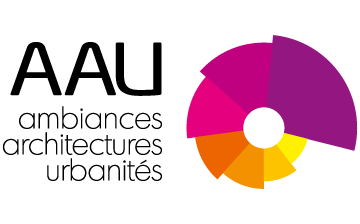Espace urbain, art et utopie. Une approche critique de la dimension utopique dans l’artiation des espaces urbains de la ville.
Urban Space, Art and Utopia.
A Critical Analysis of the Utopic Dimension in the Artiation of the Public Spaces of the City.
JUAN CANTAVELLA Anna - Thèse de doctorat soutenue en 2009
Encadrement : J.F. Augoyard
FR
Notre recherche s’organise autour des concepts d’art, d’espace urbain et d’utopie. L’accent sera mis sur le décalage existant entre l’espace conçu par les concepteurs des espaces urbains de la ville et l’espace pratiqué, pensé ou relaté par les passants. Ce que l’on veut analyser plus précisément c’est ce que devient, à l’usage, une ville pensée en termes d’utopie et quels sont les avatars de la fonction de l’art fortement présente dans la conception. Dans ce sens, notre première question s’interroge sur les relations existantes entre l’art et l’espace urbain où l’oeuvre se situe. Cette question sous-entend deux axes principaux à explorer : celui qui questionne l’intention des concepteurs de ces espaces artialisés et celui qui s’intéresse aux pratiques de l’espace urbain et à la perception des oeuvres d’art disposées à travers le tissu urbain. Pour nous mettre en oeuvre cette problématique, tout en partant de l’ethnographie comme cadre méthodologique, nous avons décidé de nous concentrer sur une ville concrète, conçue et construite d’une façon assez particulière : Gibellina en Sicile (proche de Trapani). Détruite en 1968 par un tremblement de terre, elle a été conçue comme « le musée d’art contemporain en plein air le plus grand d’Europe » et cette conception nous l’a fait choisir comme un excellent exemple pour étudier la problématique que nous venons vient d’ébaucher.
EN
This research evolves around the concepts of art, urban space and utopia. It analyses the distance that exists between the conceived space of urban planners and the practiced, thought and narrated space of users and passers-by.
The interest of this research lies in the reality of a city that has been conceived in terms of utopia and the functions that art plays in its very conception. In this sense, the research interrogates the relationships between art and the urban spaces in which the artwork is integrated. This research question assumes the existence of two lines of inquiry: First, one that questions the intentions of the conceivers of these highly aestheticized spaces. Second, the one that analyses the practices in urban spaces and the perception of the artworks inserted in the urban fabric.
Taking ethnography as the main methodological approach, the research analyses these tensions by focusing on a city which has been conceived and built in a particular way: Gibellina, in Sicily (close to Trapani). Destroyed by an earthquake in 1968, the city has been conceived as “the largest open-air contemporary museum in Europe”, and this idea makes it an excellent example to study this set of problems.
